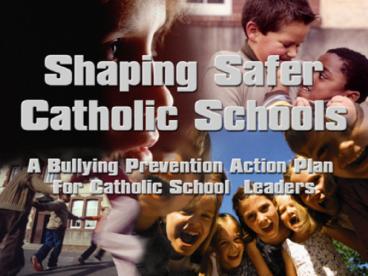Bullying: A Definition - PowerPoint PPT Presentation
1 / 16
Title:
Bullying: A Definition
Description:
The student or adult who bullies increases in power and the victimized student ... Too often, bullying has been downplayed as simply part of growing up. ... – PowerPoint PPT presentation
Number of Views:54
Avg rating:3.0/5.0
Title: Bullying: A Definition
1
(No Transcript)
2
Bullying A Definition
- Bullying is a dynamic of unhealthy interaction.
It is a form of aggression used from a position
of power.
3
Bullying Key Elements
- POWER IMBALANCE (perceived)
- Age, Gender, Race, Sexual Orientation, Religion,
Creed, Citizenship, Size, Abilities, Knowledge,
Material possessions, Social Networks - INTENT TO HARM (perceived)
- IMPACT (experienced)
- Physical, Psychological, Behavioral
- REPEATED or SINGLE INCIDENT
4
Bullying is a Relationship Problem
- The student or adult who bullies is using power
to control and distress another. - The student or adult who is victimized becomes
caught in a relationship in which he/she is being
abused. - The student or adult who bullies increases in
power and the victimized student loses power in
their relationship.
5
- We are devastated by the final act of violence
but rarely outraged by the events that led to the
final act. - (Barbara Coloroso, The Bully, The Bullied and The
Bystander)
6
- Bullying Affects all Students
- Those who bully
- Those who are victimized
- Those who are onlookers
7
- Unexplained absences
- Change in level of participation
- Excluded and isolated from peers
- Taunted and ridiculed
- Vandalized or stolen personal property
- Outmatched in arguments/fights
8
- Wandering around the school alone
- Hanging around teachers
- Avoiding going home
- Appearing anxious
- Difficulty concentrating
- Decrease in academic
- achievement
9
The Role of Adults
- Adults are often unaware of bullying or unsure of
how to intervene. We encourage bullying
behaviours when we believe that - Bullying is a normal part of growing up
- Students eventually grow out of it
- It is best to have students resolve their own
conflicts - Student conflicts reflect play-fighting and
teasing which are not harmful - Sometimes students deserve it, therefore provokin
g the attacks - Students who report being bullied are ratting on
others (ratting vs. reporting) - (Peplar Craig, LaMarsh Centre for Violence,
2000)
10
What does bullying look like?
- Consider this
- Is saying fag any different than any racial
epithet? - Why do most of us tend to accept these words?
- Is it ever okay to racialize or sexualize
words? - How do you respond to incidents like these when
you see or hear them at school?
11
The Problem
- Research States
- low teacher intervention may occur because
- The majority of episodes are verbal
- Episodes are brief
- Bullying occurs when monitoring is
low (Peplar Craig, 2000)
12
The Solution
- staff commitmentand the implementation of a
whole-school approach are key factors in
creating effective bullying prevention programs. - In other words, if all the adults in the
building arent part of the solution, they become
part of the problem. - (Parsons, 2005)
13
Intervention Is The Key
- Never ignore
- Never excuse
- Never become immobilized by fear or insecurity
- Intervention Models teach staff how to respond
and report on bullying behaviours.
14
- Dont worry that children never listen to you,
worry that they are always watching you. - (Robert Fulgham)
15
Legal Issues
- Education Amendment Act (Bill 212)
- Adds bullying to list of infractions for possible
discipline - Adds out-of-school conduct which impacts on the
school climate - P/PM 144 (Policy and Program Memorandum)
- Requires school boards to develop bullying
prevention intervention programs - Legal Concepts of
- Deliberate Indifference
- Duty of Care
16
Adults modeling and messaging are crucial. Too
often, bullying has been downplayed as simply
part of growing up. On the contrary, research and
experience have consistently shown that bullying
is a serious issue, with far reaching
consequences to individuals, their families,
peers, and the community at large. (Shaping
Safer Schools, Ministry of Education 2005)































